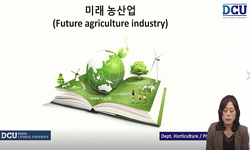Although rice has always been considered the most important crop in Korea, Koreans` perception of rice underwent dramatic changes through the 1970s and 1980s. Chronic shortage of rice by the mid-1970s led the South Korean state to coerce its people to...
http://chineseinput.net/에서 pinyin(병음)방식으로 중국어를 변환할 수 있습니다.
변환된 중국어를 복사하여 사용하시면 됩니다.
- 中文 을 입력하시려면 zhongwen을 입력하시고 space를누르시면됩니다.
- 北京 을 입력하시려면 beijing을 입력하시고 space를 누르시면 됩니다.
Rice in Modern Korea: Matter of Survival or of Taste? = Rice in Modern Korea: Matter of Survival or of Taste?
한글로보기https://www.riss.kr/link?id=A102090902
- 저자
- 발행기관
- 학술지명
- 권호사항
-
발행연도
2016
-
작성언어
-
- 주제어
-
KDC
900
-
자료형태
학술저널
-
수록면
113-137(25쪽)
- 제공처
- 소장기관
-
0
상세조회 -
0
다운로드
부가정보
다국어 초록 (Multilingual Abstract)
Although rice has always been considered the most important crop in Korea, Koreans` perception of rice underwent dramatic changes through the 1970s and 1980s. Chronic shortage of rice by the mid-1970s led the South Korean state to coerce its people to reduce rice consumption and replace rice with more affordable grains, like barley or imported wheat. Beginning in the early 1970s, the Park Chung-hee administration enthusiastically promoted a new high-yielding variety of rice called tongil (meaning, reunification), developed through collaboration with international agroscientists engaged in the Green Revolution worldwide. Tongil was very successful in South Korea in the mid-1970s, to the extent that the South Korean government could proudly declare rice self-sufficiency in the country from 1977. In 1978, however, tongil became vulnerable to various diseases and was increasingly criticized by farmers. Moreover, rapid growth of the South Korean economy enabled people to pursue a more diversified diet, which led to increasing demand for fruits, meat, and dairy products, and eventually to a decrease in rice consumption. As a result, from the mid-1980s, just a few years after South Korea had achieved rice self-sufficiency, the South Korean state encountered the unexpected problem of rice surplus. This change-from the fear of a rice shortage to anxiety over rice surplus-took less than one generation to occur. Reappraisal of this rapid and abrupt shift will help to foster a better understanding of changes in South Koreans` perceptions of themselves over time.
동일학술지(권/호) 다른 논문
-
The Contemporary Origins of Korean Dynamism
- 대한민국역사박물관
- ( Park Myoung-kyu )
- 2016
-
Land, from Driver of Growth to Source of Inequality
- 대한민국역사박물관
- ( Cho Seok-gon )
- 2016
-
Evolution of Public Housing Policy in Korea: From Distribution to Rental Housing
- 대한민국역사박물관
- ( Yim Dongkun )
- 2016
-
Modern Consumption Culture through the Lens of Dokkaebi Market: Disciplined Modernism
- 대한민국역사박물관
- ( Kang Myungkoo )
- 2016




 DBpia
DBpia KISS
KISS







